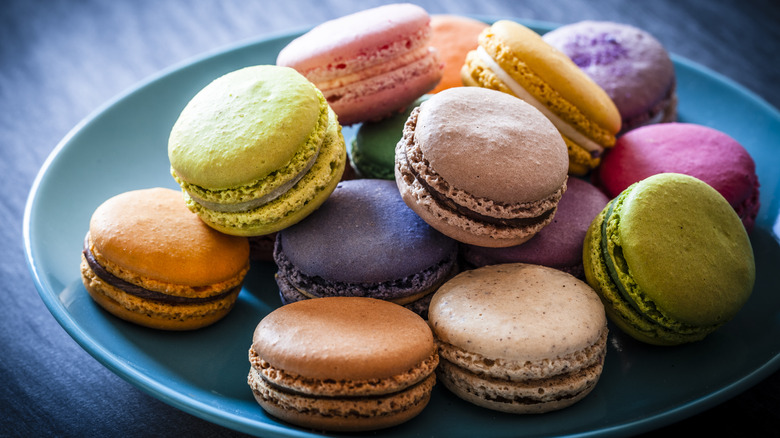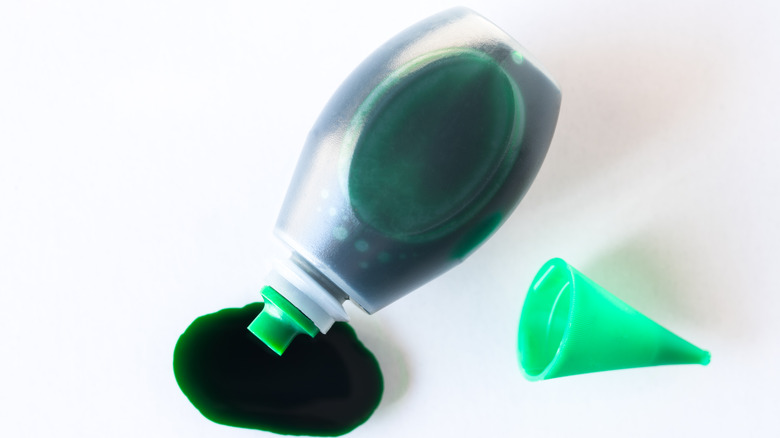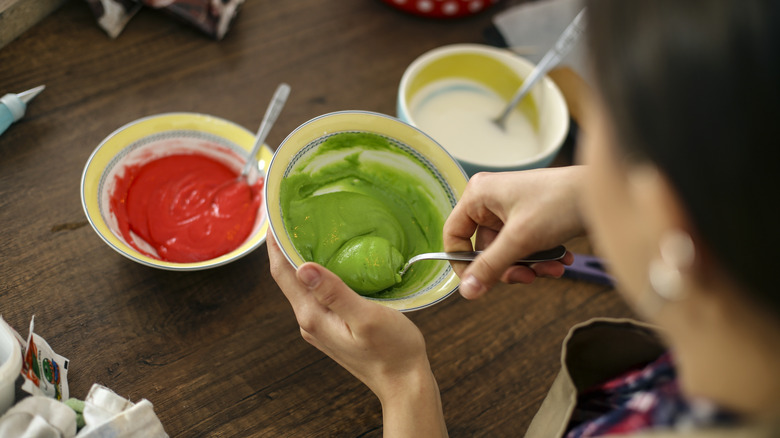Gel Vs Liquid Food Coloring: Which Is Best For Your Cookies?
Incorporating food coloring into a recipe is a great way to add a fun pop of color to a dish. Still, buying the right bottle of dye isn't black and white. From thick varieties of this colored paste to thinner liquids, there are so many different types of food dyes to choose from. Luckily, most can be split into two distinct categories: gel or liquid. So, when it comes time to bake some cookies, which is best for your batch? To understand that, we'll have to dig into the makeup of both gel and liquid food colorings.
Both types of this dye come from synthetic colors (which is why you should stay away from eating too much food coloring). It's only the bases of each dye that are different. Liquid food coloring is made from a water base, while gel comes from glycerin or corn syrup. A liquid food coloring will be much thinner and lend a lighter color than gel, while a gel dye is much thicker and more concentrated. For this reason, it's best to use liquid food coloring when you want a lighter, more pastel-colored cookie, such as a soft lemon shortbread, and gel for when you want something a little more vibrant, like a red velvet cookie or vivid macaron. Still, before you add anything to your grocery list, just wait, because color isn't the only factor to consider here.
The pros and cons of these colorful dyes
Aside from the differences in color, let's talk about the individual pros of both liquid and gel food coloring so you can decide which to add to your cookies. In terms of availability, liquid food colorings are generally much more prominent in grocery stores. Because of that, liquid dyes are often cheaper than gel dyes, too. Still, because gel dyes are more concentrated than liquid, they could end up being more cost-efficient in the long run because you can use less drops to achieve a more colorful end product.
Now let's talk cons. Because liquid food colorings generally lend lighter hues than gel, you might have to use more of it to get your desired color. This makes it a weak choice if you want vivid colors in your cookies, especially since using too much dye could also throw off the taste or texture of the recipe. Gel dyes, however, are a little harder to find than liquid. Plus, some gel colorings are hyper-concentrated, which means it can be very easy to add too much. It's a little harder to work with, so you really have to be careful as you drop the dye in.
How to use these dyes in your kitchen
Beyond a batch of cookies, liquid food coloring is often used to tint ice cream or Easter eggs, which gives these treats their signature dreamy, pastel look. Alternatively, thick gel dyes can hold up better in cake batters and candy mixtures. However, you should keep gel dyes out of stiff doughs or batters. Because of the thick concentration of the coloring, it can be difficult to mix into stiff doughs. This is why liquid food colorings might be the better choice for use in most cookie recipes, as the dough for those mixtures is often much more stiff than other baked goods.
Still, gel dyes would be better suited in an icing to spruce up cakes or cookies, as a coloring for cream fillings, and in other softer mixtures such as muffin batter. So, choosing the best food coloring for your cookies really depends on how you want to use the addition in your recipe. Use your best judgement.


